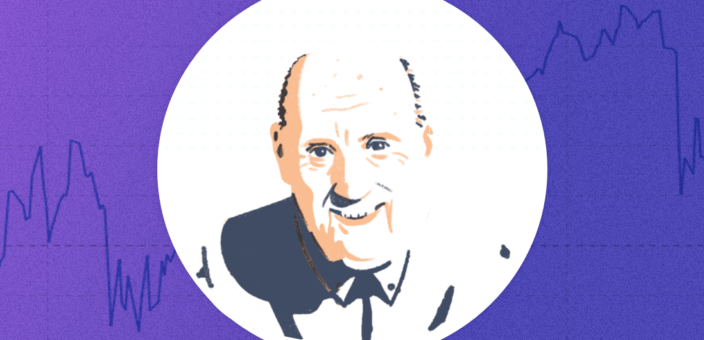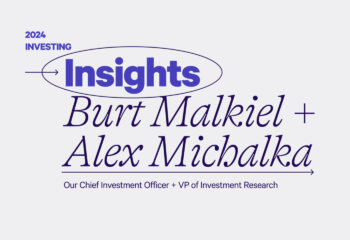A version of this post was originally published in the Wall Street Journal on September 21, 2022.
Wealthfront investors who have indicated a capacity and willingness to accept risk hold a portfolio that is heavily weighted toward equities. While such a portfolio has yielded generous returns over time, recent results have been unsatisfactory. While bonds have also fallen in price as inflation has accelerated, equities all over the world have fallen sharply. Unfortunately, these events test the patience of investors. The correct response, however, is to stay the course and to continue building an investment portfolio by making periodic additional purchases over time.
Certainly investors have lots to worry about. Despite falling oil prices, inflation has proved to be stubbornly sticky. Health care and shelter costs continue to rise sharply, and core inflation (excluding food and energy) remains high. It appears that the Federal Reserve will have no choice but to continue raising interest rates, making a recession increasingly likely. And there are longer-term concerns as well. U.S. population growth has moderated and we are aging rapidly, suggesting that labor shortages could put continuing pressures on growth and inflation. The structural factors such as globalization that have restrained inflation are weakening. Rising protectionism, an antipathy to immigration, and the balkanization of supply chains will only exacerbate stagflation tendencies. Our Goldilocks economy could easily morph into a 1970s-style combination of persistent inflation and unsatisfactory growth.
None of these outcomes is predestined, and we need to recognize the inherent uncertainty of any economic forecasts. Macroeconomists have failed to predict some of the most important events of the last century. Still, we need to consider the possibility of dire economic results, and ask whether standard advice we give investors, relying on equities to produce generous long-run returns, needs to be modified if economic outcomes turn unfavorable. This is especially important because even after the recent decline in stock prices, valuations remain rich. The cyclically-adjusted price-earnings (CAPE) multiple (which is the ratio of a stock’s price relative to average inflation-adjusted earnings over the last decade) is one indicator that can help investors assess when an investment is over- or undervalued. A higher CAPE multiple means an investment is more likely to be overvalued. The CAPE multiple for the market as a whole currently stands at 28. This is lower than its recent high of 38 and well below its peak of 44 at the height of the dot.com bubble in early 2000. But it is substantially above its average of 16, and at least in the past, future 10-year equity returns have been well below average at valuations this high. CAPE multiples do not predict short-run market movement, but they do have a high inverse correlation with long-term returns.
Despite these uncertainties, this is not the time to give up on equities. Long-term investors saving to create a retirement nest egg need to invest in a portfolio heavily weighted with common stocks. Stocks, representing the ownership of real assets, have been an effective inflation hedge for over a century and are likely to be so in the future. And regular savers can realize the advantages of dollar-cost averaging in their investment programs. Periodic investments of equal dollar amounts ensure that all the holdings are not purchased at temporarily inflated prices and that some of the shares will be bought after a sharp decline. Because you buy more shares when prices are low, your average price per share will be lower than the average price at which the purchases were executed. Dollar-cost averaging makes it possible for investors to gain positive returns even when the market averages do not increase. And the greater the volatility of stock prices, the greater the potential of gain.
As a thought experiment, consider the experience of dollar-cost averagers during two terrible recent periods of stock-market history. From January 1968 through the start of 1979, the U.S. economy suffered from unrelenting stagflation and volatile stock markets that ended the 11 years with a zero gain in the major averages. The 13 years from January 2000, the height of the dot.com bubble, were equally bad. Stock valuations fell from bubble high levels, and market averages at the start of 2012 stood at the same level where they started the new millennium. Dollar-cost averagers, however, did earn positive returns. If they invested periodic equal amounts in low-cost index funds (as Wealthfront investors do), per dollar invested, they earned 5.2% per year during the stagflation period and 5.7%in the post-bubble period, assuming all dividends were reinvested. These returns were only modest, but they did exceed inflation. So even if our worst fears are realized regarding valuations and stagflation, the correct strategy is not to give up on equities – the steady investor is still likely to come out ahead.
One important postscript needs to be added to this investment advice. For those in retirement, who may need to sell some of their investments to meet living expenses, dollar-cost averaging of their sales is NOT the appropriate strategy. Periodic sales would involve liquidating more of your shares just when prices were low. The appropriate approach is to overweight the portfolio with “dividend growth stocks” so that living expenses can be financed without the need to sell shares. Dividend-paying stocks provide both liquidity and inflation protection for those living off retirement savings.
Disclosure
The information contained in this communication is provided for general informational purposes only, and should not be construed as personalized investment or tax advice. Nothing in this communication should be construed as a solicitation, offer, or recommendation, to buy or sell any security. Any links provided to other server sites are offered as a matter of convenience and are not intended to imply that Wealthfront Advisers or its affiliates endorses, sponsors, promotes and/or is affiliated with the owners of or participants in those sites, or endorses any information contained on those sites, unless expressly stated otherwise.
Investment management and advisory services–which are not FDIC insured–are provided by Wealthfront Advisers LLC (“Wealthfront Advisers”), an SEC-registered investment adviser, and financial planning tools are provided by Wealthfront Software LLC (“Wealthfront”). Brokerage products and services are offered by Wealthfront Brokerage LLC, member FINRA / SIPC. All investing involves risk, including the possible loss of money you invest, and past performance does not guarantee future performance. Please see our Full Disclosure for important details.
Wealthfront Advisers, Wealthfront Brokerage and Wealthfront are wholly owned subsidiaries of Wealthfront Corporation.
© 2022 Wealthfront Corporation. All rights reserved.
About the author(s)
Dr. Burton G. Malkiel, the Chemical Bank Chairman’s Professor of Economics, Emeritus, and Senior Economist at Princeton University, is Wealthfront's Chief Investment Officer. Dr. Malkiel is the author of the widely read investment book, A Random Walk Down Wall Street, which helped launch the low-cost investing revolution by encouraging institutional and individual investors to use index funds. Dr. Malkiel, also the author of The Elements of Investing, is one of the country’s leading investor advocates. View all posts by



